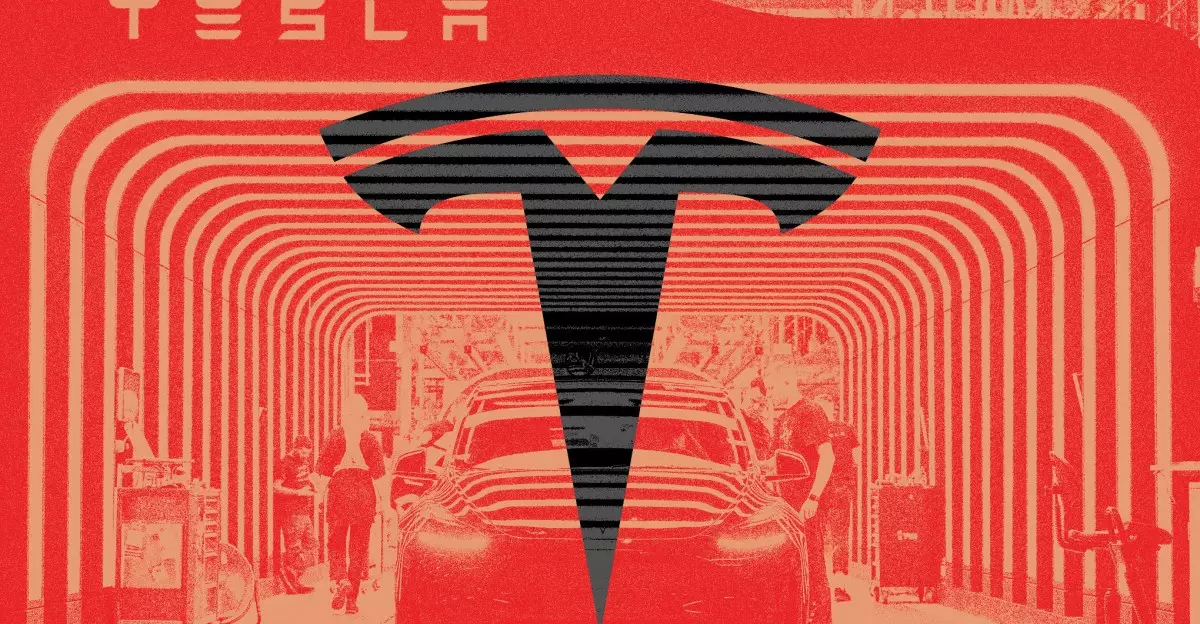Tesla has reached a crossroads, and the recent sales figures from Europe provide a stark illustration of the challenges it faces. A staggering 50 percent drop in sales within such a dynamic market as Europe indicates more than just a temporary setback; it signifies a potential crisis in brand loyalty and consumer perception. With numerous advancements in the electric vehicle (EV) sector, Tesla’s struggles are particularly alarming given that battery-electric vehicle sales overall have enjoyed a growth surge of over 26 percent in early 2025. This juxtaposition suggests that consumers aren’t losing interest in electric vehicles; rather, they’re reevaluating their options, and Tesla appears to be losing the competitive edge it once effortlessly enjoyed.
Strategic Failures and Market Dynamics
Tesla introduced a refreshed version of the Model Y, a vehicle expected to rejuvenate its consumer base and drive new interest. This strategy, however, has seemingly faltered, revealing a troubling disconnect between the company’s expectations and market reality. With only 7,261 new registrations in April, one must question the adequacy of Tesla’s approach to marketing and customer engagement. The growing competition from both domestic European manufacturers and aggressive Chinese EV brands is undoubtedly eroding Tesla’s market share. This landscape is further complicated by Tesla’s sporadic production strategies, which have failed to align with robust demand in other segments of the market.
In a world where consumers are inundated with options, Tesla’s strategy needs to be more than just innovative; it must be visionary. The company’s previous dominance seems reflectively tied to its reputation for cutting-edge technology and delightful consumer experiences. The inability to adapt quickly to changing consumer preferences and intensifying competition is evident. With competitors now showcasing products that not only match Tesla’s specifications but also offer competitive pricing, the once-coveted loyalty to the brand is wavering.
The Impact of Elon Musk’s Political Engagement
Perhaps the most puzzling aspect of Tesla’s decline is Elon Musk’s entanglement in political discourse. His outspoken support of controversial political figures has left many loyal customers feeling alienated. The latest surveys indicating a fall in Musk’s approval ratings reveal a complex relationship between his public persona and the Tesla brand. His actions, especially in support of Germany’s far-right politicians, have placed the company in a precarious position in Europe, a region known for its progressive consumer values.
Musk’s recent pledge to pivot his focus back to Tesla may come too late. The negative ramifications of his political activities seem to have drained some of the shine off the Tesla brand, highlighting the pitfalls of intertwining corporate culture with personal ideologies. Moving forward, a substantial shift in leadership strategy could be required to separate brand identity from political narratives.
Corporate Reputation Under Scrutiny
Tesla’s recent plunge in Standing as one of the most recognized brands globally, now stands faltered in reputation rankings compared to just a few years ago. Ranked poorly in surveys targeting corporate perceptions, Tesla has fallen to 95th place, down from a commendable 8th. This erosion in public sentiment shows that the company is not just facing a sales decline; it’s wrestling with a tarnished image that could have far-reaching consequences. The challenge lies in how effectively Tesla can rehabilitate its brand perception while navigating the intricate relationship between consumer demands, market values, and its own evolving identity.
Looking Ahead: The Road to Recovery
While Musk remains optimistic that a resurgence in sales is on the horizon following the resolution of factory downtime, concerns linger regarding his focus on emergent technologies such as AI and autonomous driving at the expense of addressing core issues. The disconnect between the innovations that excite investors and the customer experience that retains loyalty creates a gap that must be bridged for Tesla’s recovery. A recalibration of priorities, emphasizing customer engagement and brand reputation alongside technological innovation, is essential.
As the electric vehicle landscape continues to evolve, Tesla must reinforce its commitment to its original mission—creating a lasting relationship with consumers built on trust and reliability. The competitive edge depends not just on technological leadership but on the authenticity of the brand and its resonance with consumer values. If Tesla can navigate through these tumultuous waters effectively, there remains hope for revitalization amidst the currently turbulent tides.

